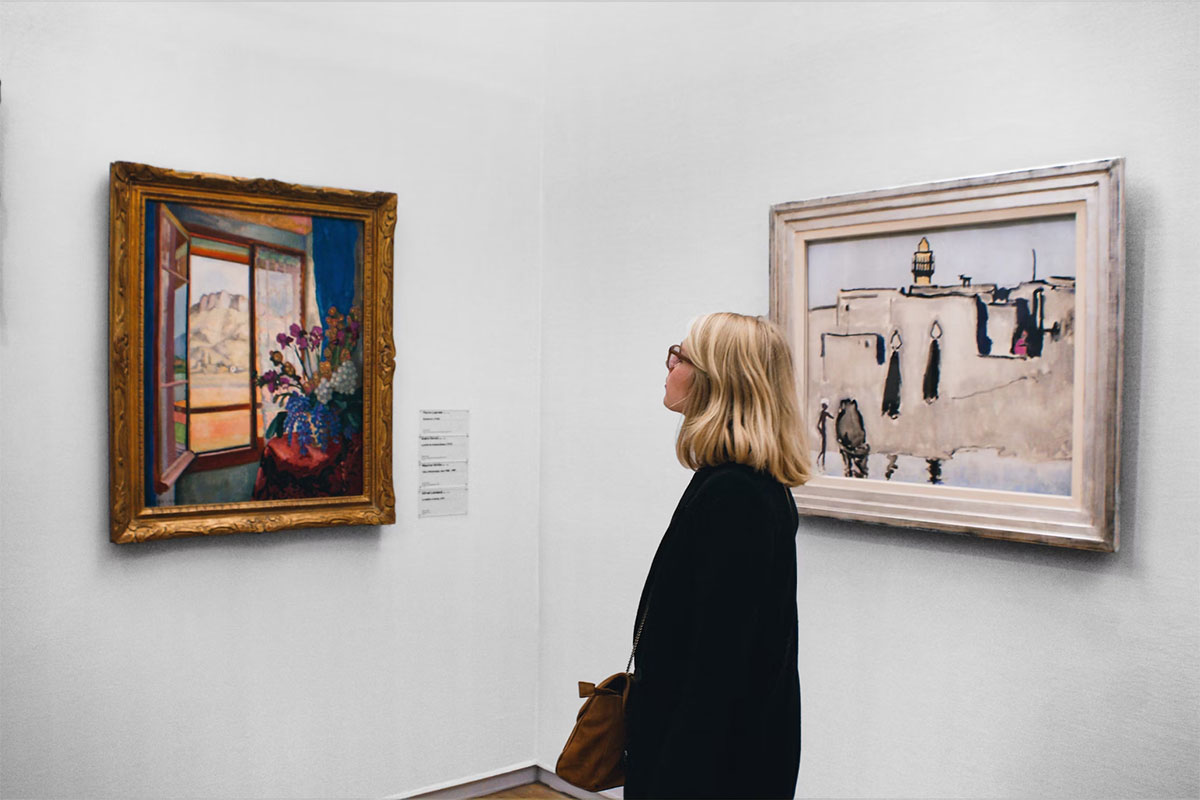Investing in fine art comes with several benefits. Whether you want to diversify your portfolio or maximize returns, the high-end art market offers a lot of value.

Blue-chip art, which includes masterpieces by Picasso, Warhol, Banksy, Kaws, Basquiat, and the like, has consistently delivered high annual returns of 14% for more than two decades. It has outperformed other assets like S&P 500 investments, which fetched annual returns of 9.5% during the same timeframe.
Moreover, contemporary and post-war art has appreciated at a CAGR of 12.6% between 1995 and 2022, outperforming traditional asset classes like stock and bonds. Plus, art demonstrates low correlations to other investment vehicles during inflationary periods.
If you’ve ever thought about investing in blue-chip art, the chances are you’re already familiar with these benefits. But you’ve likely shrugged off the idea, assuming that such investments are only feasible for high-net-worth individuals with piles of dispensable cash.
While the high-end art market has traditionally been out of reach for ordinary investors, platforms like Masterworks are shifting the dynamic. With the Masterworks app, you can buy fractional shares of museum-caliber pieces for as little as $20.
Democratizing Fine Art Investments: How Masterworks Makes It Possible
Traditionally, investing in the works of world-renowned artists was a feat not many could achieve. Only those with millions of dollars in liquid cash could aspire to lay their hands on such pieces. Besides the hefty price point, entry into the world of auction houses and private sales was restricted.
Launched in 2017, Masterworks is eliminating the challenge of exclusivity with the fractional investment model. Each painting that the company’s acquisition team purchases is securitized with the SEC through an offering circular. In other words, they set up a limited liability company dedicated to each piece, which, in turn, facilitates fractional ownership.
Once securitized, Masterworks users can buy fractional shares of the underlying artwork. You don’t need millions of dollars of disposable income to get started. Nor do you need access to the elite world of art galleries and auctions.
Using Data to Drive High Returns
Masterworks isn’t just making fine art investments more accessible. The platform also uses a data-oriented approach to identify potentially high-yield investment opportunities.
While art auctions generate a ton of publicly available data, it isn’t available in a standardized, easily understandable format, and the details of many transactions aren’t publicized. That makes it difficult for investors to interpret this data and turn it into actionable insights.
In such a scenario, how do you determine whether investing in a particular artist’s work is likely to generate high returns? Unless you know the high-end art market like the back of your hand, it’s difficult to make strategic investment decisions.
The Masterworks data collection team scoured auction catalogs from the last three decades to compile a database of art sales. Also, they used the “repeat sales” approach to arrive at a price index that can help determine an individual painting’s potential for appreciation.
The research team at Masterworks uses this database, along with advanced analytics tools, to identify artist markets with the maximum momentum for investing. These insights help the company’s acquisition specialists make calculated decisions about purchasing fine art.
They don’t have to rely on their intuition or personal views about a piece to determine whether it’s worth a shot. It isn’t surprising that less than 5% of the artworks on sale make it through the platform’s screening process.
While no investment can guarantee sure-shot returns, such powerful data-backed insights minimize the risk of incurring losses. That, in turn, allows novice investors with limited exposure to the world of fine art to invest with confidence.
If you’re wondering what kind of returns Masterworks has delivered to its members, here are some details:
- In 2022, the company paid out returns worth $25 million to its user base.
- With 16 exits to date, the platform has generated an average annualized return of 45%.
- Eight of the last nine sales fetched close to 14% average annualized returns.
Even the worst-performing piece, a painting by Andy Warhol, resulted in 4.1% annual gains.
Adding Flexibility to an Illiquid Asset Class
Blue-chip art is often regarded as an illiquid asset, meaning it’s difficult to turn your investments into cash. You’ll have to hold a painting for years before there’s any noticeable appreciation in its value. Also, reselling artwork is a cumbersome process that comes with additional costs.
Masterworks offers a secondary market where members can engage in trading. In other words, you can sell your shares to other users, just like you’d trade shares in the stock market. You can use the cash for an emergency, invest in a different asset class, or buy shares of another painting on Masterworks.
Alternatively, you can wait for the company’s acquisition and private sales experts to identify a high-yield resell opportunity. They’ll sell the underlying artwork and distribute the profits to shareholders after deducting management fees and other associated costs.
Whether you choose to trade your shares or wait for a resale, you’re never responsible for finding and negotiating with buyers. You can enjoy peace of mind and focus on growing your investments while Masterworks manages the lion’s share of work in these transactions.
Changing the Face of Fine Art Investments
Masterworks is challenging the notion that blue-chip art is restricted to the privileged class. With the fractional investment platform, anyone with a few hundred dollars can buy shares of high-value paintings. Plus, you get access to data-driven insights on appreciation potential and returns. It’s just as easy to sell your shares to other users on the secondary market.
As of this writing, Masterworks boasts a strong community of over 811,000 members. As more retail investors join, the idea of investing in fine art will become even more popular.









